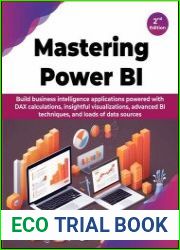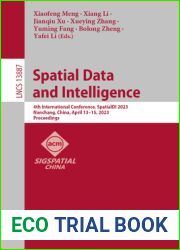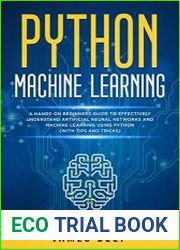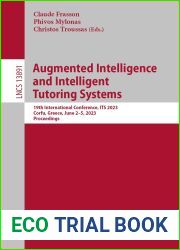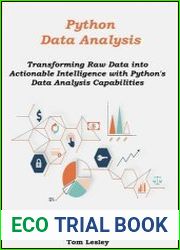
BOOKS - Quantum Artificial Intelligence with Qiskit

Quantum Artificial Intelligence with Qiskit
Author: Andreas Wichert
Format: PDF
File size: PDF 15 MB
Language: English

Format: PDF
File size: PDF 15 MB
Language: English

The book is divided into three parts: Part I introduces the field of Quantum Artificial Intelligence QAI explaining its goals and motivations and providing a detailed overview of the current state of research in this area. Part II describes symbolic quantum algorithms, which are quantum algorithms that use logical operations to manipulate qubits and perform computations. These algorithms are typically implemented using a quantum circuit model. Finally, part III covers sub-symbolic quantum algorithms, which leverage the unique properties of quantum systems to perform computations without explicit logical operations. The book concludes by discussing some of the challenges facing QAI and outlining future research directions. The book is designed to provide readers with a comprehensive understanding of QAI and the tools they need to create and manipulate quantum programs on accessible devices. All examples are available for download at GitHubcomandrzejwichertqai.
Книга состоит из трех частей: Часть I знакомит с областью квантового искусственного интеллекта QAI, разъясняя ее цели и мотивы и предоставляя подробный обзор текущего состояния исследований в этой области. Часть II описывает символические квантовые алгоритмы, представляющие собой квантовые алгоритмы, использующие логические операции для манипулирования кубитами и выполнения вычислений. Эти алгоритмы обычно реализуются с использованием модели квантовой схемы. Наконец, часть III охватывает субсимвольные квантовые алгоритмы, которые используют уникальные свойства квантовых систем для выполнения вычислений без явных логических операций. Книга завершается обсуждением некоторых проблем, стоящих перед QAI, и изложением будущих направлений исследований. Книга призвана дать читателям исчерпывающее понимание QAI и инструментов, необходимых им для создания и манипулирования квантовыми программами на доступных устройствах. Все примеры доступны для скачивания на GitHubcomandrzejwichertqai.
livre se compose de trois parties : La partie I présente le domaine de l'intelligence artificielle quantique de QAI, en expliquant ses objectifs et ses motivations et en fournissant un aperçu détaillé de l'état actuel de la recherche dans ce domaine. La partie II décrit des algorithmes quantiques symboliques qui sont des algorithmes quantiques utilisant des opérations logiques pour manipuler des qubits et effectuer des calculs. Ces algorithmes sont généralement mis en oeuvre à l'aide d'un modèle de circuit quantique. Enfin, la partie III couvre les algorithmes quantiques sous-symboliques qui utilisent les propriétés uniques des systèmes quantiques pour effectuer des calculs sans opérations logiques explicites. livre se termine par une discussion sur certains des défis auxquels est confrontée l'IAQ et un exposé des orientations futures de la recherche. livre vise à donner aux lecteurs une compréhension exhaustive de l'IAQ et des outils dont ils ont besoin pour créer et manipuler des programmes quantiques sur les appareils disponibles. Tous les exemples sont disponibles en téléchargement sur GitHubcomandrzejwichertqai.
libro consta de tres partes: Parte I introduce el campo de la inteligencia artificial cuántica QAI, explicando sus objetivos y motivos y proporcionando una visión detallada del estado actual de la investigación en este campo. La Parte II describe algoritmos cuánticos simbólicos que son algoritmos cuánticos que utilizan operaciones lógicas para manipular cubitos y realizar cálculos. Estos algoritmos generalmente se implementan usando un modelo de esquema cuántico. Finalmente, la Parte III abarca algoritmos cuánticos subsímiles que utilizan propiedades únicas de sistemas cuánticos para realizar cálculos sin operaciones lógicas explícitas. libro concluye con una discusión sobre algunos de los desafíos que enfrenta la QAI y una exposición de las líneas de investigación futuras. libro pretende dar a los lectores una comprensión exhaustiva de los QAI y las herramientas que necesitan para crear y manipular programas cuánticos en los dispositivos disponibles. Todos los ejemplos están disponibles para descargar en GitHubcomandrzejwichertqai.
O livro é composto por três partes: A parte I apresenta a área de inteligência artificial quântica do QAI, explicando seus objetivos e motivos e fornecendo uma visão detalhada do estado atual da pesquisa neste campo. A parte II descreve algoritmos quânticos simbólicos que são algoritmos quânticos que usam operações lógicas para manipular cubitos e realizar cálculos. Estes algoritmos são normalmente implementados usando um modelo quântico. Finalmente, a parte III abrange algoritmos quânticos subimvais que usam propriedades únicas de sistemas quânticos para realizar computações sem operações lógicas claras. O livro termina com a discussão de alguns dos desafios que o QAI enfrenta e a apresentação de futuras áreas de pesquisa. O livro tem como objetivo dar aos leitores uma compreensão exaustiva do QAI e das ferramentas necessárias para criar e manipular programas quânticos em dispositivos disponíveis. Todos os exemplos estão disponíveis para download no GitHubcomandrzejwichertqai.
Il libro è composto da tre parti: La Parte I presenta il campo dell'intelligenza artificiale quantistica QAI, spiegandone gli obiettivi e i motivi e fornendo una panoramica dettagliata dello stato attuale della ricerca in questo campo. La parte II descrive algoritmi quantistici simbolici che sono algoritmi quantistici che utilizzano operazioni logiche per manipolare cubiti e eseguire calcoli. Questi algoritmi di solito vengono implementati utilizzando un modello di schema quantistico. Infine, la parte III riguarda gli algoritmi quantistici subacquei, che utilizzano le proprietà uniche dei sistemi quantistici per eseguire calcoli senza operazioni logiche esplicite. Il libro si conclude con la discussione di alcuni dei problemi che il QAI deve affrontare e la descrizione dei futuri percorsi di ricerca. Il libro è progettato per fornire ai lettori una comprensione completa del QAI e degli strumenti di cui hanno bisogno per creare e manipolare i programmi quantistici sui dispositivi disponibili. Tutti gli esempi sono disponibili per il download.
Das Buch besteht aus drei Teilen: Teil I führt in den Bereich der Quantum Artificial Intelligence QAI ein, erläutert deren Ziele und Motive und gibt einen detaillierten Überblick über den aktuellen Forschungsstand in diesem Bereich. Teil II beschreibt symbolische Quantenalgorithmen, bei denen es sich um Quantenalgorithmen handelt, die logische Operationen verwenden, um Qubits zu manipulieren und Berechnungen durchzuführen. Diese Algorithmen werden üblicherweise unter Verwendung eines Quantenschaltungsmodells implementiert. Schließlich behandelt Teil III subsymbolische Quantenalgorithmen, die die einzigartigen Eigenschaften von Quantensystemen nutzen, um Berechnungen ohne explizite logische Operationen durchzuführen. Das Buch schließt mit einer Diskussion einiger der Herausforderungen, vor denen QAI steht, und einer Skizzierung zukünftiger Forschungsrichtungen. Das Buch soll den sern einen umfassenden Einblick in QAI und die Werkzeuge geben, die sie benötigen, um Quantenprogramme auf verfügbaren Geräten zu erstellen und zu manipulieren. Alle Beispiele stehen auf GitHubcomandrzejwichertqai zum Download bereit.
Książka składa się z trzech części: Część I wprowadza dziedzinę kwantowej sztucznej inteligencji QAI, wyjaśniając jej cele i motywy oraz przedstawiając szczegółowy przegląd aktualnego stanu badań w tej dziedzinie. Część II opisuje symboliczne algorytmy kwantowe, które są algorytmami kwantowymi wykorzystującymi operacje logiczne do manipulowania kwbitami i wykonywania obliczeń. Algorytmy te są zazwyczaj zaimplementowane za pomocą modelu obwodu kwantowego. Wreszcie część III obejmuje subsymbolowe algorytmy kwantowe, które wykorzystują unikalne właściwości systemów kwantowych do wykonywania obliczeń bez wyraźnych operacji logicznych. Książka kończy się omówieniem niektórych wyzwań stojących przed QAI i przedstawieniem przyszłych kierunków badań. Książka ma na celu zapewnienie czytelnikom kompleksowego zrozumienia QAI oraz narzędzi potrzebnych do tworzenia i manipulowania programami kwantowymi na przystępnych cenach urządzeń. Wszystkie przykłady są dostępne do pobrania na GitHubcomandrzejwichertqai.
הספר מורכב משלושה חלקים: חלק I מציג את תחום הבינה המלאכותית הקוונטית QAI, מבהיר את מטרותיו ומניעיו ומספק סקירה מפורטת של מצב המחקר הנוכחי בתחום זה. חלק II מתאר אלגוריתמים קוונטיים סמליים, שהם אלגוריתמים קוונטיים המשתמשים בפעולות לוגיות כדי לתפעל קוויטים ולבצע חישובים. אלגוריתמים אלה מיושמים בדרך כלל באמצעות מודל מעגל קוונטי. לבסוף, חלק III מכסה אלגוריתמים קוונטיים תת-סימבוליים המשתמשים בתכונות הייחודיות של מערכות קוונטיות לביצוע חישובים ללא פעולות לוגיות מפורשות. הספר מסכם על ידי דיון בכמה מהאתגרים העומדים בפני קיו-איי ומתאר הנחיות מחקר עתידיות. הספר שואף לתת לקוראים הבנה מקיפה של QAI ושל הכלים שהם צריכים כדי ליצור ולתפעל תוכניות קוונטיות במכשירים זולים. כל הדוגמאות זמינות להורדה באתר GitHubcomandrzejwichertqai.''
Kitap üç bölümden oluşuyor: Bölüm I, kuantum yapay zeka QAI alanını tanıtıyor, amaçlarını ve amaçlarını açıklıyor ve bu alandaki mevcut araştırma durumuna ayrıntılı bir genel bakış sunuyor. Bölüm II, kubitleri manipüle etmek ve hesaplamalar yapmak için mantıksal işlemleri kullanan kuantum algoritmaları olan sembolik kuantum algoritmalarını tanımlar. Bu algoritmalar tipik olarak bir kuantum devre modeli kullanılarak uygulanır. Son olarak, Bölüm III, açık mantıksal işlemler olmadan hesaplamalar yapmak için kuantum sistemlerinin benzersiz özelliklerini kullanan subsymbol kuantum algoritmalarını kapsar. Kitap, QAI'nin karşılaştığı bazı zorlukları tartışarak ve gelecekteki araştırma yönlerini özetleyerek sona eriyor. Kitap, okuyuculara QAI ve uygun fiyatlı cihazlarda kuantum programları oluşturmak ve işlemek için ihtiyaç duydukları araçlar hakkında kapsamlı bir anlayış kazandırmayı amaçlıyor. Tüm örnekler GitHubcomandrzejwichertqai üzerinden indirilebilir.
يتكون الكتاب من ثلاثة أجزاء: الجزء الأول يقدم مجال الذكاء الاصطناعي الكمي QAI، ويوضح أهدافه ودوافعه ويقدم لمحة عامة مفصلة عن الحالة الحالية للبحث في هذا المجال. يصف الجزء الثاني خوارزميات الكم الرمزية، وهي خوارزميات كمومية تستخدم العمليات المنطقية لمعالجة الكيوبتات وإجراء الحسابات. يتم تنفيذ هذه الخوارزميات عادةً باستخدام نموذج الدائرة الكمومية. أخيرًا، يغطي الجزء الثالث خوارزميات الكم subymbol التي تستخدم الخصائص الفريدة للأنظمة الكمومية لإجراء الحسابات دون عمليات منطقية صريحة. يختتم الكتاب بمناقشة بعض التحديات التي تواجه QAI وتحديد اتجاهات البحث المستقبلية. يهدف الكتاب إلى منح القراء فهمًا شاملاً لمؤشر QAI والأدوات التي يحتاجونها لإنشاء ومعالجة البرامج الكمومية على الأجهزة ذات الأسعار المعقولة. جميع الأمثلة متاحة للتنزيل على GitHubcomandrzejwichertqai.
이 책은 세 부분으로 구성되어 있습니다. 파트 I은 양자 인공 지능 QAI 분야를 소개하여 목표와 동기를 명확히하고이 분야의 현재 연구 상태에 대한 자세한 개요를 제공합니다. 파트 II는 논리 연산을 사용하여 큐 비트를 조작하고 계산을 수행하는 양자 알고리즘 인 기호 양자 알고리즘을 설명합니다. 이러한 알고리즘은 일반적으로 양자 회로 모델을 사용하여 구현됩니다. 마지막으로, Part III은 양자 시스템의 고유 한 특성을 사용하여 명시적인 논리적 연산없이 계산을 수행하는 하위 기호 양자 알고리즘을 다룹니다. 이 책은 QAI가 직면 한 몇 가지 과제를 논의하고 향후 연구 방향을 간략하게 설명함으로써 결론을 내립 이 책은 독자들에게 QAI와 저렴한 장치에서 양자 프로그램을 만들고 조작하는 데 필요한 도구에 대한 포괄적 인 이해를 제공하는 것을 목 모든 예제는 GitHubcomandrzejwichertqai에서 다운로드 할 수 있습니다.
本書は、量子人工知能QAIの分野を紹介し、その目的と動機を明らかにし、この分野における研究の現状を詳しく説明する。Part IIでは、qubitを操作して計算を行うための論理演算を使用する量子アルゴリズムであるシンボリック量子アルゴリズムについて説明します。これらのアルゴリズムは通常、量子回路モデルを使用して実装されます。最後に、Part IIIは、明示的な論理演算なしで計算を実行するために量子システムの固有の特性を使用するサブシンボル量子アルゴリズムをカバーしています。この本は、QAIが直面している課題のいくつかを議論し、将来の研究の方向性を概説することによって結論付けます。本は読者にQAIと彼らが手頃な価格のデバイス上で量子プログラムを作成し、操作するために必要なツールの包括的な理解を与えることを目的としています。すべての例はGitHubcomandrzejwichertqaiでダウンロードできます。
本書分為三部分:第一部分介紹了QAI量子人工智能領域,闡明了其目標和動機,並詳細介紹了該領域的研究現狀。第二部分描述了符號量子算法,即使用邏輯運算來操縱量子位並執行計算的量子算法。這些算法通常使用量子電路模型實現。最後,第三部分涵蓋了亞字符量子算法,該算法利用量子系統的獨特特性在沒有顯式邏輯運算的情況下執行計算。該書最後討論了QAI面臨的一些挑戰,並概述了未來的研究方向。該書旨在使讀者全面了解QAI及其在可用設備上創建和操縱量子程序所需的工具。所有示例都可以在GitHubcomandrzejwichertqai上下載。













